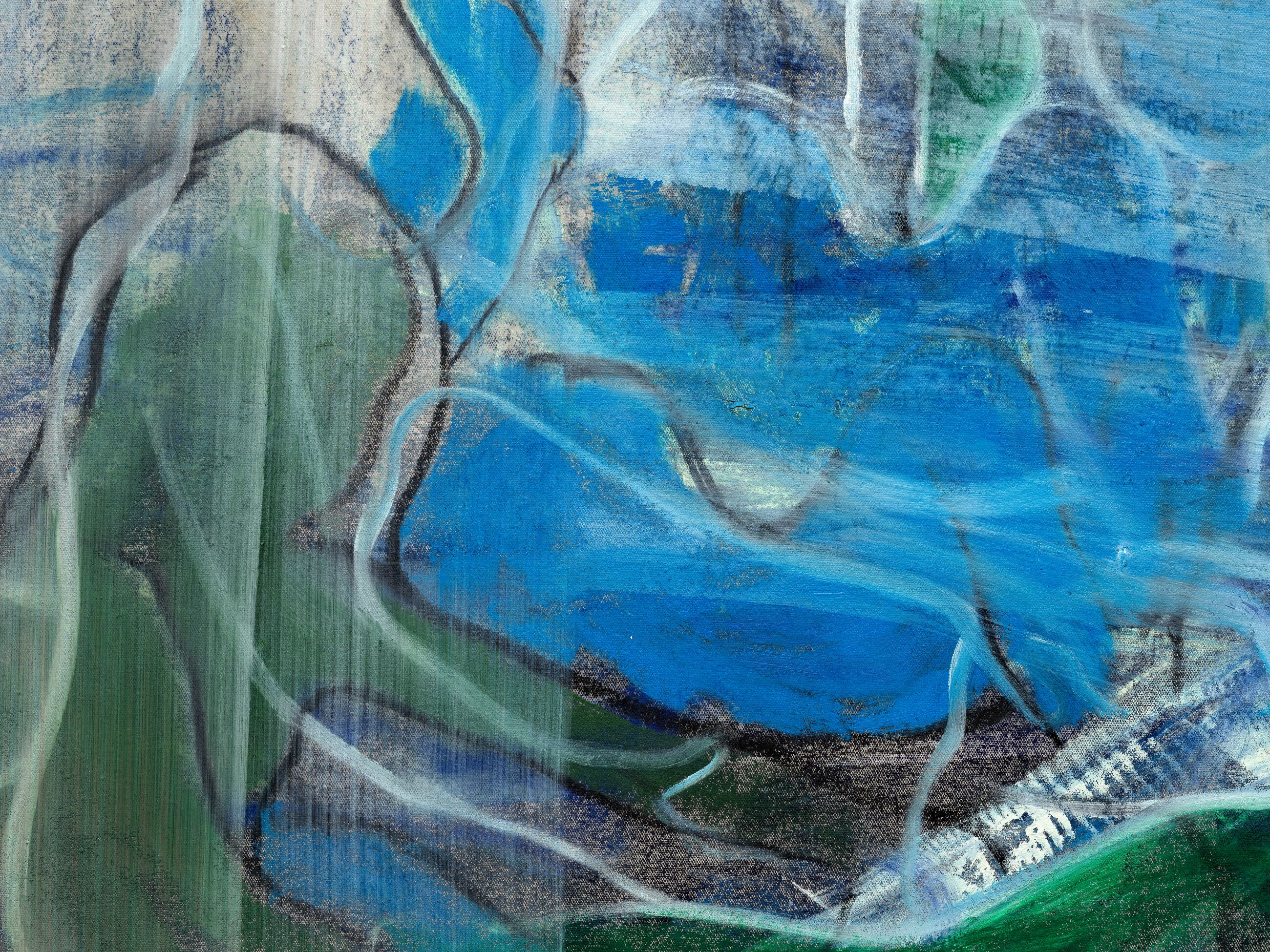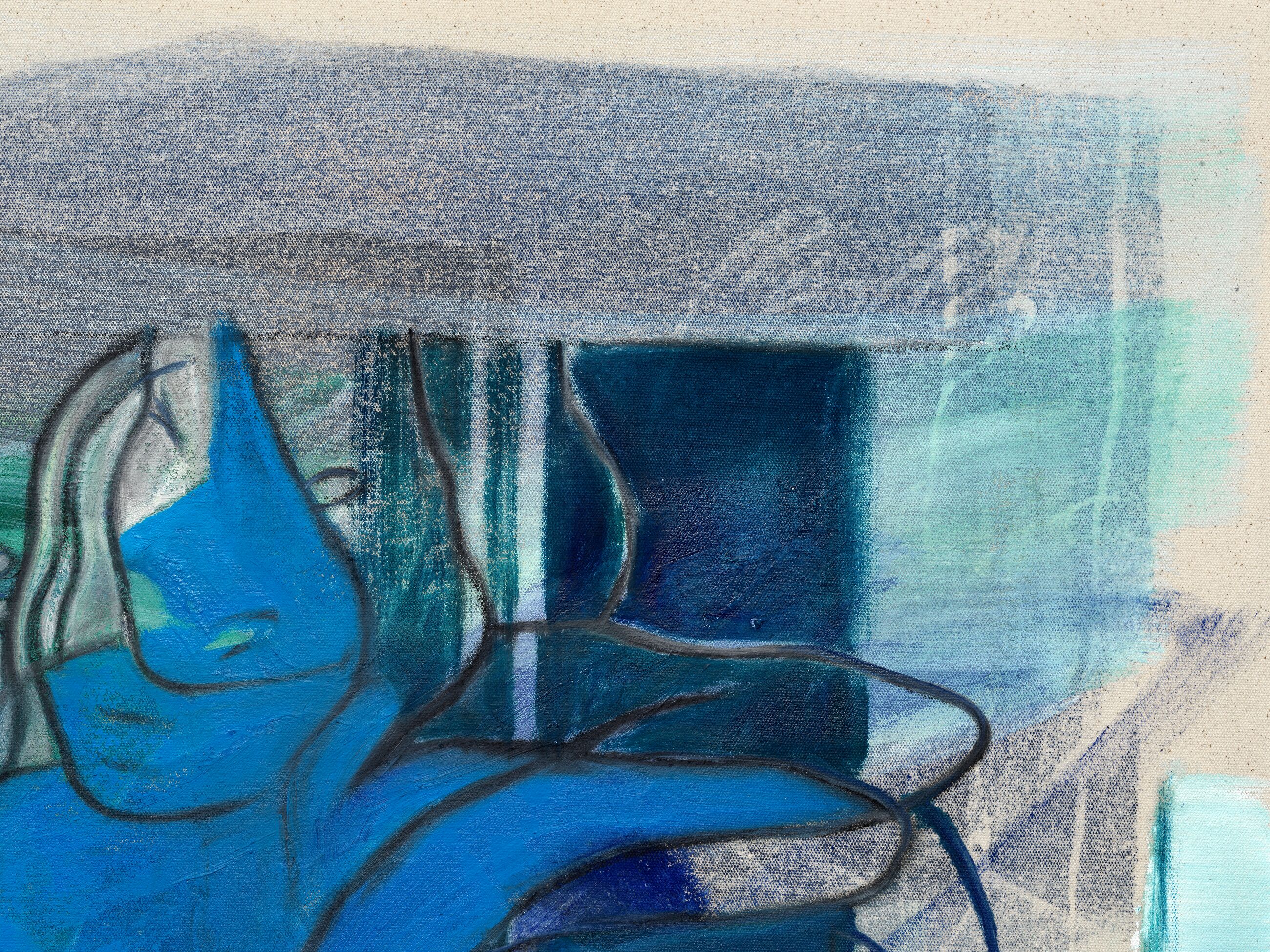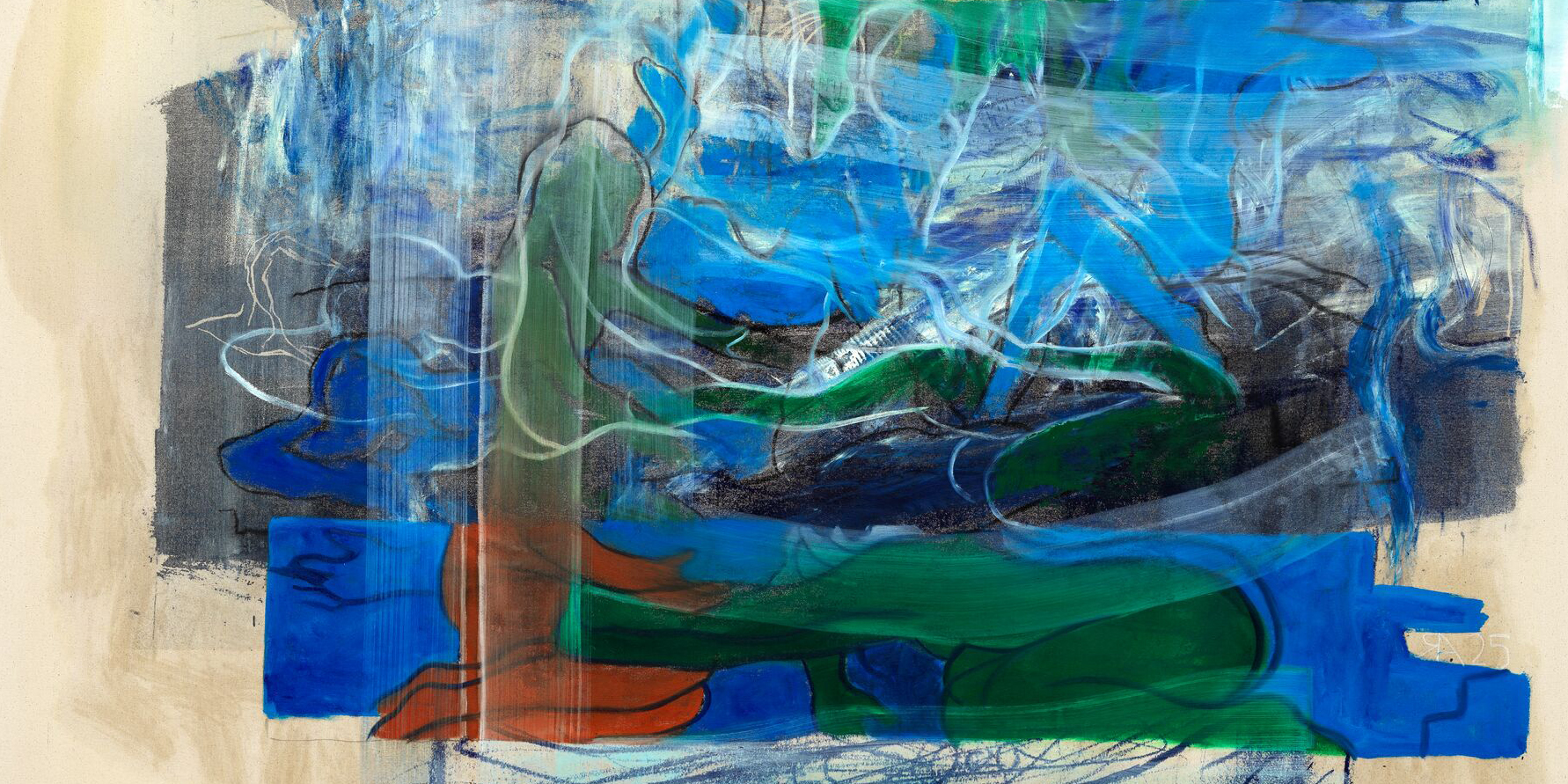
In her first exhibition at Hauser & Wirth’s Paris gallery, Rita Ackermann presents a new series of paintings and large, related works on paper that take up the theme of the double. In the works on view, Ackermann does not just evoke the presence of a dual entity but unveils its structure. Innovative in their unexpected combinations of materials and defined by a sharp conceptual tension, these works draw inspiration from two giants of French culture—Jean-Luc Godard and Paul Virilio. The results are as unsettling as they are exacting.
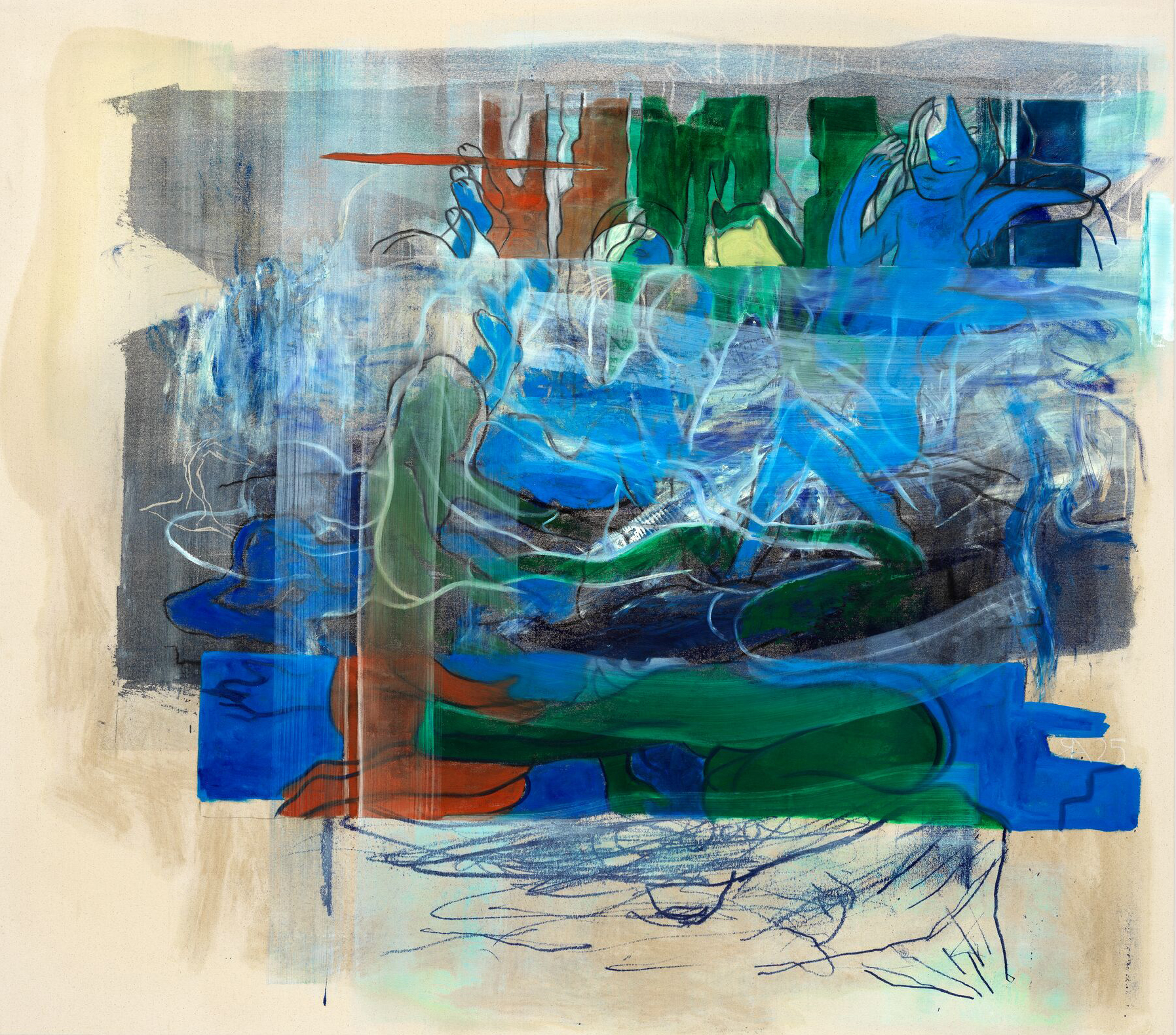
Doubles 8
2025
Ackermann’s Doubles (2024 – 2025) bespeak things that bedevil one another: a present the artist can never be at one with; a past that disallows any full disencumbering—images so well-known that they might be better forgotten. What force drives such image-making, if not a desire to capture the nuances of an ever-shifting reality dominated by a sense of absences and displacements? In these new works, shapes invert, colors reverse, images can be read as positives or negatives. In some of them, contour lines entrance, forming figures both elastic and weightless, always on the verge of vanishing. In others, pigment reduces bodies to a few restless, contorted shapes. Everything about these Doubles not only turns the tables on their beholders, but also subverts established ways of interpreting works of art. Even their title misleads, for these Doubles have as little to do with mirrors as with alter egos. Instead, these images of images fluctuate between remaining a nascent specter and the moment when that mental projection gains substance, doubling into a recognizable thing, as in cinema.
The artist’s concern with such visual phenomena is not merely conceptual. Its origins reach back to impulses that began to structure her life, when she relocated from Budapest to New York City. From then on, she began to exist in a median state, defined by a double set of experiences: the one, anchored in a soft-Communist upbringing; the other, a coming of age as an artist in the dream factory of the Big Apple, where she chose to remain. The dialectic between those two beginning points also left a deep mark on her first body of work (1993-1995): the adolescent girls who would become the springboard for much that followed, for example, ‘Doubles 8’ (2025). Its flattened, almost transhuman forms appear as though enlargements on a screen that slides in and out of view. Overlapping and instable, like their predecessors these girls are nothing if not clones.
À propos de l’artiste
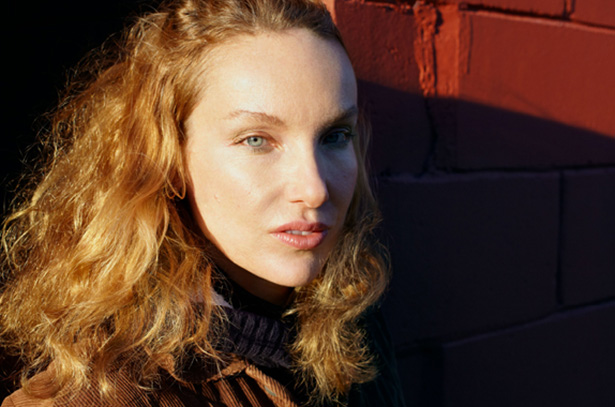
Rita Ackermann
The opposing impulses of creation and destruction mark the touchstone of the Hungarian-born, New York-based artist Rita Ackermann’s practice, which continues to evolve and manifest itself in the shift from representation to abstraction.
Ackermann’s compositions occupy a space between the figurative and the abstract, where human forms simultaneously disappear and re-emerge. In a series titled Chalkboard Paintings, large-scale compositions on canvas were primed with chalkboard paint, on which washes of white chalk and green and blue pigments were applied. These Abstract Expressionist-like works are reminiscent of actual chalkboards in a classroom, covered with unintentional erasures and marks, yet they have been conceptually executed by multiple deletions of figurative drawings and landscapes. By way of these gestures, the revenant outline of the erased drawings often emerges into the foreground. The final picture is a record of these movements.
Current Exhibitions
1 / 12
